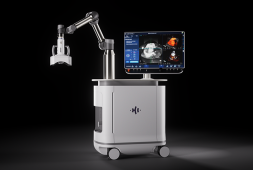
A significant clinical trial has revealed promising outcomes for two novel treatment approaches aimed at addressing aggressive prostate cancer. The study demonstrated enhanced chances of survival, as both treatments proved more effective in prolonging the lives of individuals with recurrent prostate cancer compared to the existing standard treatment, while also preventing disease progression.
“If these treatments are approved by the Food and Drug Administration, our results will be practice changing,” said Stephen Freedland, MD. He is a prostate cancer researcher at Cedars-Sinai as well as the lead author of the study. “Both of these new options improved metastasis-free survival while preserving quality of life.”
The recent findings from the Phase III international study, spearheaded by investigators from Cedars-Sinai Cancer, have been unveiled in the latest edition of the New England Journal of Medicine.
Prostate cancer, afflicting the walnut-sized gland responsible for semen production, doesn’t always equate to a terminal prognosis. While some individuals might not necessitate immediate treatment due to a slow-developing form of the disease, those grappling with a more aggressive manifestation often undergo initial interventions such as surgery or radiation therapy. Regrettably, approximately one-third of these patients experience a recurrence of the cancer within a decade.
For individuals facing a resurgence marked by aggressiveness, the standard recourse is androgen deprivation therapy (ADT). This hormonal treatment aims to diminish the production of testosterone, the male sex hormone pivotal to the growth and dissemination of prostate cancer cells. By curbing the growth-stimulating effects of testosterone, ADT seeks to impede the progression of the disease.
However, ADT comes with two notable drawbacks. First, it doesn’t entirely eradicate testosterone, leaving residual levels that may still contribute to cancer growth. Second, the therapy is accompanied by a host of side effects, further complicating the overall treatment experience for patients.
“When you go on ADT, the testosterone level in the blood is reduced, but not completely eliminated,” Freedland said. “And the concern is that the testosterone that remains may still be enough to stimulate tumor growth. Also, patients don’t love the idea of being on hormones.”
In the examination of 1,068 individuals diagnosed with prostate cancer across 244 locations in 17 countries, Freedland and his colleagues explored two novel interventions, each targeting specific aspects of the condition.
Conducted as a randomized clinical trial, the study involved dividing the patients into three groups. The first group received Androgen Deprivation Therapy (ADT) along with enzalutamide, a medication designed to inhibit the effects of testosterone. Enzalutamide operates by preventing any remaining testosterone in the bloodstream from stimulating the proliferation of cancer cells.
The second group was administered enzalutamide alone. This approach relied solely on the medication to obstruct the effects of testosterone, even in cases where the testosterone levels in the patients’ blood were not diminished. This experimental design aimed to evaluate the efficacy of enzalutamide as a standalone intervention, irrespective of testosterone reduction.
“We wanted to see whether enzalutamide on its own was so effective that we didn’t need the ADT,” Freedland said.
The last cohort of patients exclusively underwent Androgen Deprivation Therapy (ADT), representing the prevailing conventional treatment approach.
Upon analysis, researchers observed that the joint administration of ADT and enzalutamide led to a significant 58% reduction in the risk of metastasis or death compared to ADT as a standalone treatment. Furthermore, enzalutamide as a singular intervention demonstrated a notable 37% reduction in the risk of metastasis or death when compared to ADT alone. Importantly, both therapeutic regimens preserved the patients’ quality of life in comparison to those undergoing ADT in isolation.
“While the combination therapy offers greater risk reduction, some men might prefer enzalutamide alone. It does a good job of preventing cancer spread or death, with different side effects that may be more acceptable for some men,” Freedland stated.
The subsequent phase involves the manufacturers of enzalutamide submitting an application for approval from the Food and Drug Administration (FDA). This pivotal step is essential for transitioning the experimental therapy into widespread adoption, as emphasized by Freedland. Notably, the study in question received financial support from Pfizer and Astellas Pharma, both of whom played pivotal roles in the collaborative development of enzalutamide. The regulatory approval process by the FDA marks a critical juncture, paving the way for the potential integration of enzalutamide as a widely accessible therapeutic option.



